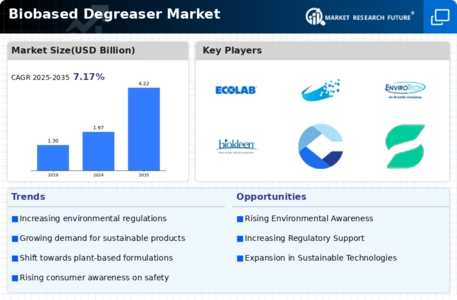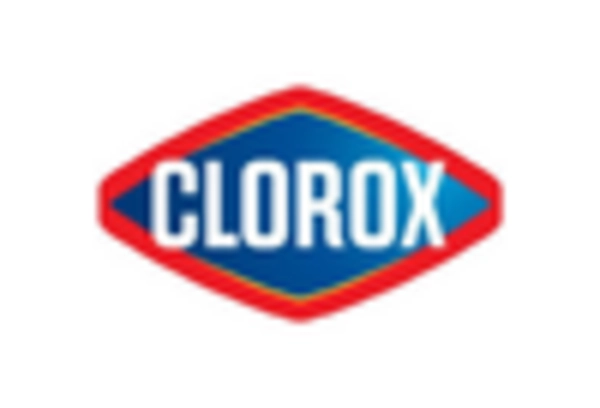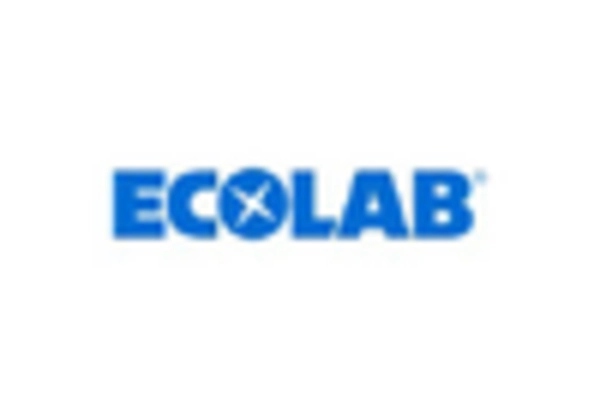Rising Industrial Applications
The Biobased Degreaser Market is witnessing a rise in industrial applications, which is a key driver of market growth. Industries such as automotive, aerospace, and manufacturing are increasingly adopting biobased degreasers for their cleaning processes. This trend is largely attributed to the effectiveness of biobased products in removing grease and contaminants without harming the environment. As industries strive for sustainability, the demand for biobased degreasers is expected to increase, with projections indicating a market expansion of approximately 6% over the next few years. This growth reflects a broader commitment to sustainable practices across various sectors.
Corporate Sustainability Initiatives
Corporate sustainability initiatives are significantly influencing the Biobased Degreaser Market. Many companies are integrating sustainability into their core business strategies, leading to increased adoption of biobased products. This shift is driven by the recognition that sustainable practices can enhance brand reputation and customer loyalty. As organizations commit to reducing their carbon footprint, the demand for biobased degreasers is likely to rise. Market analysis suggests that companies implementing sustainability initiatives are 50% more likely to invest in eco-friendly cleaning solutions. This trend not only supports the growth of the biobased degreaser market but also fosters a culture of environmental responsibility within industries.
Increasing Environmental Regulations
The Biobased Degreaser Market is experiencing a surge in demand due to increasing environmental regulations. Governments worldwide are implementing stricter guidelines to reduce the environmental impact of industrial cleaning agents. This regulatory landscape encourages manufacturers to shift towards biobased solutions, which are perceived as more sustainable. As a result, companies are investing in the development of biobased degreasers that comply with these regulations. The market for biobased degreasers is projected to grow at a compound annual growth rate of approximately 8% over the next five years, driven by the need for compliance with environmental standards. This trend indicates a significant opportunity for businesses that can innovate and provide effective, eco-friendly cleaning solutions.
Consumer Preference for Sustainable Products
Consumer preferences are shifting towards sustainable products, significantly impacting the Biobased Degreaser Market. As awareness of environmental issues grows, consumers are increasingly seeking products that align with their values. This shift is evident in various sectors, including automotive, manufacturing, and food processing, where companies are adopting biobased degreasers to meet consumer demand for greener alternatives. Market Research Future indicates that nearly 70% of consumers are willing to pay a premium for environmentally friendly products. This trend not only drives sales for biobased degreasers but also encourages manufacturers to innovate and expand their product lines to cater to this growing market segment.
Technological Innovations in Biobased Formulations
Technological innovations are playing a crucial role in the Biobased Degreaser Market. Advances in formulation technologies are enabling the development of more effective and efficient biobased degreasers. These innovations include the use of enzymes, surfactants, and other natural ingredients that enhance cleaning performance while maintaining environmental safety. The introduction of new formulations is expected to increase the market share of biobased degreasers, as they offer comparable or superior performance to traditional solvents. Furthermore, the market is projected to witness a growth rate of 7% annually, driven by these technological advancements that cater to diverse industrial applications.


















Leave a Comment